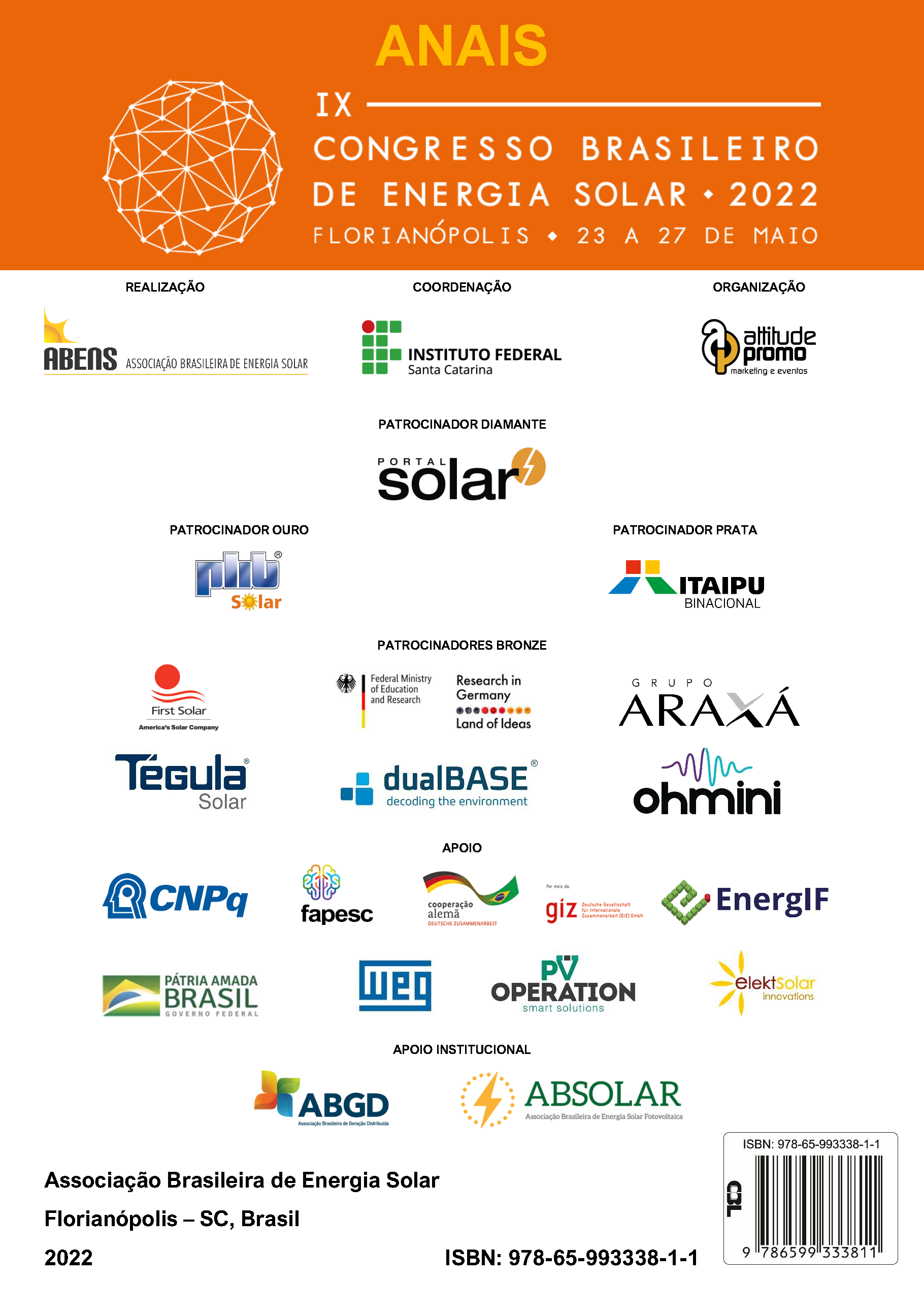ESTUDIO EXPERIMENTAL DE LECHO EMPACADO DE PIEDRAS A ALTA TEMPERATURA UTILIZANDO ESCORIA DE COBRE COMO MATERIAL DE ALMACENAMIENTO
DOI:
https://doi.org/10.59627/cbens.2022.1241Palavras-chave:
Almacenamiento térmico, estudio experimental, lecho empacado de piedras, escoria de cobreResumo
El almacenamiento térmico ha mostrado ser altamente beneficioso al acoplarse a sistemas solares para la generación de calor y energía. Actualmente se utiliza en centrales eléctricas concentradas que utilizan sal fundida como material de almacenamiento, pero esta tecnología tiene inconvenientes considerables, ya que puede afectar el rendimiento de la planta. Se ha demostrado que el almacenamiento en lecho empacado utilizando aire como fluido de transferencia de calor es una alternativa competitiva, especialmente cuando se utilizan materiales de desecho industriales, lo que permite un alto rendimiento de almacenamiento. Este estudio considera una configuración experimental de un tanque horizontal lleno de escorias de cobre, que opera dentro del rango de temperatura media a alta, en un ciclo de carga-descarga. Los resultados muestran que la alta capacidad térmica de las escorias induce una alta inercia térmica y densidad de energía del tanque de almacenamiento, sin ningún inconveniente asociado con los altos gradientes térmicos.
Downloads
Referências
Agalit, H., Zari, N., Maafouri, M., (2017). Thermophysical and chemical characterization of induction furnace slags for high temperature thermal energy storage in solar tower plants. Solar Energy Materials and Solar Cells 172, 168–176.
Agalit, H., Zari, N., & Maaroufi, M. (2020). Suitability of industrial wastes for application as high temperature termal energy storage (TES) materials in solar tower power plants – A comprehensive review. Solar Energy, 208(September), 1151–1165. https://doi.org/10.1016/j.solener.2020.08.055
Curto, P. A., & Stern, G. (1980). Thermal storage using slag. Alternative Energy Sources;(United States), 1(CONF-801210-).
Calderón-Vásquez, I., Segovia, V., Cardemil, J. M., & Barraza, R. (2021). Assessing the use of copper slags as termal energy storage material for packed-bed systems. Energy, 227.
El Alami, K., Asbik, M., & Agalit, H. (2020). Identification of natural rocks as storage materials in thermal energy storage (TES) system of concentrated solar power (CSP) plants – A review. Solar Energy Materials and Solar Cells, 217(September), 110599. https://doi.org/10.1016/j.solmat.2020.110599
Fernandes, D., Pitié, F., Cáceres, G., & Baeyens, J. (2012). Thermal energy storage: “How previous findings determine current research priorities.” Energy, 39(1), 246–257. https://doi.org/10.1016/j.energy.2012.01.024
Gil, A., Calvet, N., Ortega, I., Risueño, E., Faik, A., & Rodríguez-aseguinolaza, J. (2014). Characterization of a by-product from steel industry applied to thermal energy storage in Concentrated Solar Power. Eurotherm Seminar #99 Advances in Thermal Energy Storage, 1–9.
Intrator, J., & Dunn, B. S. (2011). 2020 Strategic Analysis of Energy Storage in California: Final Project Report: Public Interest Energy Research (PIER) Program. California Energy Commission.
Krumbein, W. C., & Sloss, L. L. (1951). Stratigraphy and sedimentation (Vol. 71, No. 5, p. 401). LWW.
Leister,. Hotwind Premium & Hotwind System User’s Guide. Leister Technologies AG.; 2011.
Navarro, M. E., Martínez, M., Gil, A., Fernández, A. I., Cabeza, L. F., Olives, R., & Py, X. (2012). Selection and characterization of recycled materials for sensible thermal energy storage. Solar Energy Materials and Solar Cells, 107, 131–135. https://doi.org/10.1016/j.solmat.2012.07.032
Ortega-Fernández, I., Calvet, N., Gil, A., Rodríguez-Aseguinolaza, J., Faik, A., & D’Aguanno, B. (2015). Thermophysical characterization of a by-product from the steel industry to be used as a sustainable and low-cost thermal energy storage material. Energy, 89, 601–609. https://doi.org/10.1016/j.energy.2015.05.153


